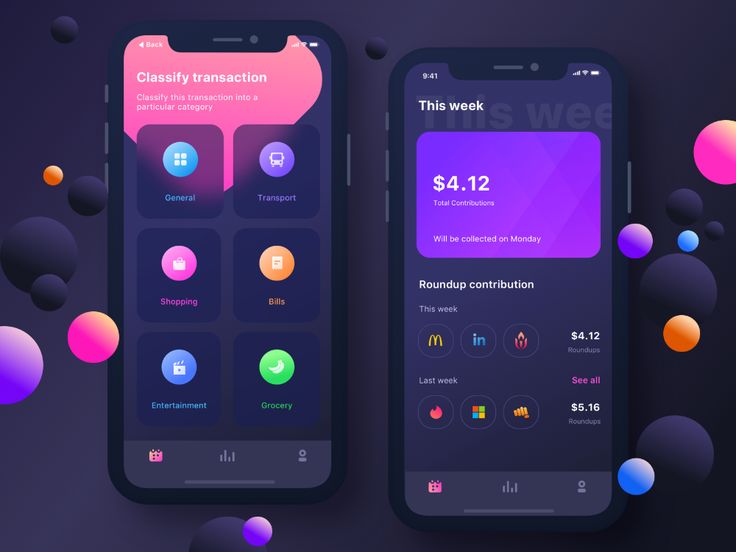User Interface (UI) is the bridge between your mobile application and its users. It’s everything the user sees, touches, and interacts with buttons, menus, colors, icons, and layout. A strong UI isn’t just about looking pretty; it’s about making sure the user can navigate and interact with the app efficiently and enjoyably. It’s where art meets functionality.
The Difference Between UI and UX
UI and UX often get used interchangeably, but they serve different purposes. UI is about visuals and interaction, while UX (User Experience) focuses on the user’s journey, emotions, and satisfaction when using the app. Think of UX as the path, and UI as the scenery and road signs that guide the journey.
First Impressions Matter
The Psychology of Visual Design
Studies show it takes users just 0.05 seconds to form an opinion about an app. That first screen they see, your splash page, your home screen, needs to visually reassure them that they’ve made the right download. Color psychology, typography, and spacing all contribute to that split-second judgment.
How UI Sets the Tone for User Experience
A messy or outdated UI can instantly signal poor functionality even if the backend works perfectly. A well-designed UI builds trust, communicates professionalism, and gives users confidence that the app will meet their needs.
Boosting User Engagement Through UI
Simple, Clean, and Intuitive Interfaces
Users don’t want to read a manual. A great UI guides them without effort. Simplicity means they can achieve what they need in fewer steps. Clarity ensures they know what each button does. Intuition means the design “feels right” without second-guessing.
Interactive Elements That Keep Users Hooked
From swipe actions to subtle animations, engaging UI makes interactions feel rewarding. Think of those little haptic taps or animated hearts, they’re not just cute, they’re psychological tools to keep users engaged and coming back.
UI and Retention Rates
Why Users Uninstall Apps with Poor UI
A clunky or confusing UI is a dealbreaker. In fact, one of the top reasons users delete apps is due to difficult navigation or unattractive design. No matter how great your app’s function, if it’s hard to use, it won’t last long on the user’s phone.
UI’s Role in Creating Habit-Forming Apps
Well-designed UI promotes regular use. It creates habits by streamlining processes (like quick access to favorite features) and offering subtle nudges (like badges or pop-up notifications) to keep users engaged over time.
Enhancing App Usability
Navigation Design
A seamless navigation system ensures users don’t get lost. Hamburger menus, bottom nav bars, and tab layouts are all popular for a reason: they work. But the best design depends on your audience and the complexity of your app.
Accessibility Considerations in UI
An inclusive UI ensures that people with disabilities can use your app just as easily. This includes contrast settings, text resizing, screen reader compatibility, and gesture alternatives. Prioritizing accessibility isn’t just ethical, it’s smart business.
Branding and Visual Identity
How UI Reflects Brand Personality
Your UI should speak your brand’s language. Whether you’re fun and playful or corporate and professional, the color schemes, icon styles, and typography should be a direct reflection of your business identity.
Consistency Across Platforms
Users switch devices all the time. A consistent UI across iOS, Android, tablets, and even web versions fosters familiarity and builds trust. Consistency doesn’t mean identical design it means a cohesive experience.
UI’s Role in Conversion Rates
Optimizing Call-to-Actions (CTAs)
Whether you want users to sign up, subscribe, or make a purchase, your UI should guide them naturally. CTAs should be visible, compelling, and placed at decision-making points throughout the app.
Frictionless Checkout and Sign-Up Processes
Users bounce at the first sign of complexity. A good UI minimizes the number of steps, provides autofill options, and avoids unnecessary form fields to make conversions smooth and seamless.
Trends in Mobile UI Design
Dark Mode and Minimalism
Dark mode is easier on the eyes and battery. Minimalism, meanwhile, removes clutter and emphasizes what matters. Together, these trends improve focus and readability, making them favorites among modern users.
Microinteractions and Motion Design
Microinteractions like loading animations or swipe confirmations make the app feel alive. They guide, reward, and provide feedback in real-time, enriching the user experience without overwhelming it.
UI Testing and Iteration
A/B Testing for UI Elements
Not sure if a red button converts better than a blue one? A/B testing can help. By testing multiple UI variations with real users, you can make data-driven decisions that improve results.
User Feedback and Continuous Improvement
Your first UI won’t be your last. The most successful apps continually evolve, collecting user feedback, monitoring behavior, and tweaking the interface for better results.
The Role of UI in App Store Rankings
Positive Reviews and Ratings Driven by UI
Most users comment on the design when leaving reviews. A beautiful, intuitive UI often leads to higher ratings, which in turn boost visibility and downloads in the app stores.
App Screenshots and Visual Appeal
Before downloading, users often browse your app screenshots. If your UI looks sleek and modern, they’re more likely to hit that download button. Your app’s visuals are your best sales pitch.
Choosing the Right Mobile App Development Partner
Why UI Expertise Matters
A mobile app isn’t just code it’s an experience. That’s why partnering with a mobile app development company in USA that values UI is critical. A partner with a UI-first approach ensures your app isn’t just functional, but also irresistible to users.
What to Look for in a Mobile App Development Company in USA
- A proven portfolio of beautiful apps
- Experience with both Android and iOS
- UI/UX specialists on staff
- Deep understanding of mobile app development services in USA
- Strong post-launch support
Devherds: Best Mobile App Development Company in USA
Our UI-First Development Philosophy
At Devherds, we don’t just build apps, we craft experiences. As a leading mobile application development company in USA, we prioritize user interface design from day one. Every tap, scroll, and swipe is carefully considered to deliver intuitive, engaging user journeys.
Success Stories and Projects
From startups to enterprise clients, Devherds has helped countless brands succeed with beautifully designed mobile apps. Our custom Mobile App Development Solutions in USA ensure that every product reflects your brand, delights your users, and drives real results.
Conclusion
User Interface is not a luxury it’s a necessity. In today’s competitive app market, you can’t afford to treat UI as an afterthought. Whether you’re looking to boost engagement, retention, or conversions, your UI holds the key. At Devherds, we combine creative design with cutting-edge development to create apps that look amazing and work even better. If you’re looking for the best mobile app development company in USA, your search ends here. Let’s build something beautiful together.
FAQs
1. What makes a great mobile UI?
A great mobile UI is intuitive, responsive, visually appealing, and aligned with the user’s goals. It should feel natural and help users accomplish tasks easily.
2. How can UI affect mobile app revenue?
UI impacts user satisfaction, retention, and conversion. A smooth UI keeps users engaged longer, encourages purchases, and minimizes drop-offs during sign-up or checkout.
3. Should UI design be part of MVP development?
Absolutely. Even a minimal viable product needs a strong UI to attract and retain early adopters. A poor interface can kill interest before your app’s true potential is realized.
4. How often should UI be updated in an app?
UI should evolve with user feedback and design trends. Aim for minor updates quarterly and major design refreshes every 1–2 years, depending on your audience and competition.
5. What industries benefit most from good UI design?
Every industry benefits, but especially retail, healthcare, fintech, education, and social media, where user trust and smooth navigation directly impact success.



















